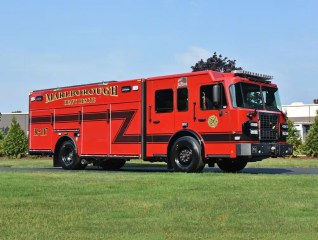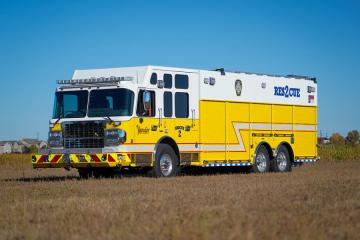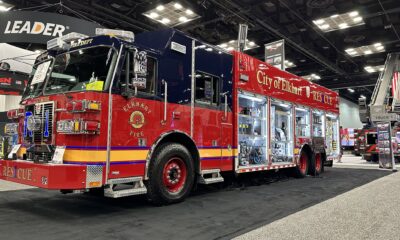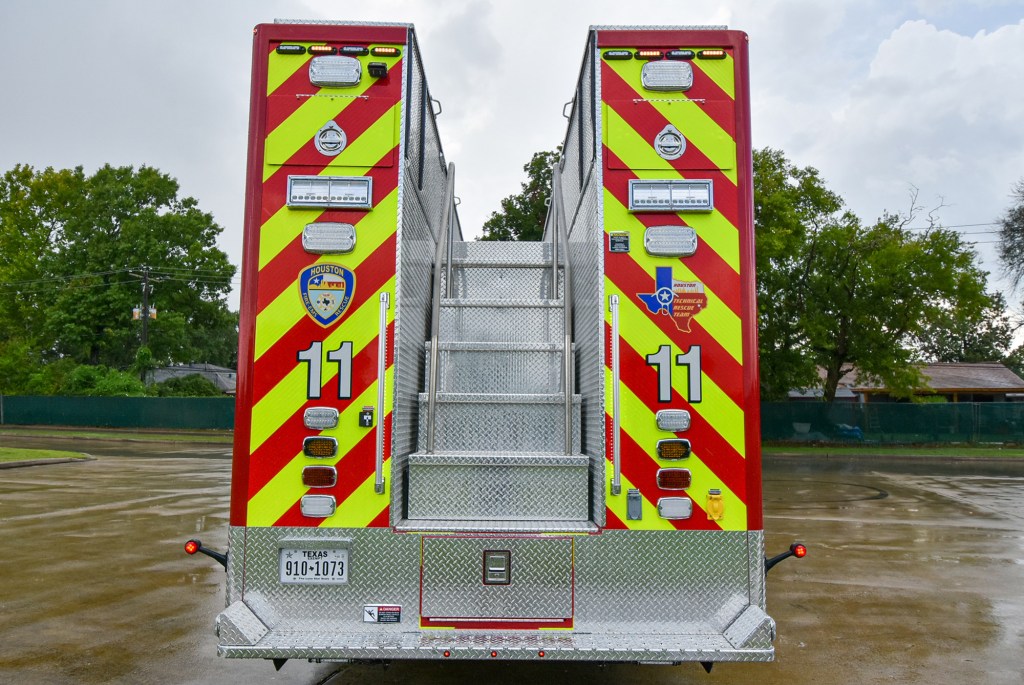The scope of operations for many fire and emergency services organizations has expanded greatly over the past 50 years or so. First came the delivery of emergency medical services; this was followed by response and management of hazardous-materials incidents.
The latest expansion has been incidents that require technical rescue. Just as firefighters responded to situations involving injured people and hazardous materials incidents before they had specialized training and equipment, such has been the case with technical rescue.
Also like EMS and hazmat, there are organizations that were early adopters in the field of tech rescue — and there are departments that are late bloomers. If your department is the later, how do you get going in the discipline of tech rescue?
Defining Moment
It’s always a good idea to first define the problem. So what is tech rescue? Tech rescue events are pretty much any situation that involves getting people out of a jam when there’s probably not a burning building in the picture.
- Someone needs extrication from a vehicle, machinery, a confined space or structural collapse? Check.
- Person stuck or injured above grade and needs to be brought down? Check.
- Someone trapped in swift water or has gone under in a lake — frozen or not — and needs rescue? Check.
- Someone is lost in wooded terrain and needs to be found and cared for? Check.
The safe, effective and efficient management of these situations all require the special skills of personnel trained in tech rescue and those personnel having access to tech rescue specific equipment.
If your organization is responding to these types of incidents in any way whatsoever, you must at least train to the awareness level of NFPA 1670, Standard on Operations and Training for Technical Search and Rescue Incidents. Here, as they say, is the “411” straight from NFPA 1670:
“The Authority Having Jurisdiction shall establish levels of operational capability needed to conduct operations at technical rescue incidents. These capabilities are based on a community hazard analysis, risk assessment, training level of personnel, and availability of internal and external resources. Furthermore, agencies are required to establish written standard operating procedures consistent with one of the following operational levels:
- Awareness — Minimum capability of a responder who, in the course of his or her regular job duties, could be called upon to respond to, or could be the first on the scene of, a technical rescue incident. This level can involve search, rescue, and recovery operations. Members of a team at this level are generally not considered rescuers.
- Operations — Capability of hazard recognition, equipment use, and techniques necessary to safely and effectively support and participate in a technical rescue incident. This level can involve search, rescue, and recovery operations, but usually operations are carried out under the supervision of technician-level personnel.
- Technician — Capability of hazard recognition, equipment use, and techniques necessary to safely and effectively coordinate, perform, and supervise a technical rescue incident. This level can involve search, rescue, and recovery operations.”
 Gaining Awareness
Gaining Awareness
Our structural firefighting protective clothing has limitations when it comes to tech rescue situations, primary among them are bulkiness and retention of body heat. Personnel trained to tech rescue awareness level should have access to special PPE for use in tech-rescue scenarios.
- Lightweight, low-profile rescue helmets
- Coveralls made with Kevlar, or other material that provides cut and abrasion protection
- Full-body harnesses, compliant with NFPA 1983: Standard on Life Safety Rope and Equipment for Emergency Services
- Adult-size, U.S. Coast Guard-approved, Type I or II personal-floatation device for each riding position on the apparatus for operations around water.
Those awareness-level personnel can engage in a thorough size-up or assessment of the situation. Define the hot zone, that is, the area where tech rescue practices are needed, along with an appropriate warm zone around the hot zone, which is at least twice as big as the hot zone.
They can deny entry to the warm zone. This means responders too. Carrying a couple of rolls of yellow banner tape aboard your apparatus can make the job of visually identifying the perimeter of the warm zone much easier to do, something that will need to be maintained until the incident has been resolved. Traffic cones are also a good tool for use with the banner tape.
Water and Air
They can focus on non-entry rescue procedures. I still remember the key actions for a drowning person from my Boy Scout Lifesaving Merit Badge requirements: Reach out to the person with a pole or stick if possible. If you can’t reach them, throw a rope or a floatation device to them. If you can’t throw, can you get to them using a boat or canoe? Only if you can’t do any of the previous three do you make an attempt at a swimming rescue.
Good equipment, especially for water rescue situations, should include: rope throw bags, a rope bag with at least 200 feet of NFPA-approved lifeline rope, and a shepherd’s hook with telescoping pole (like those at commercial pools). If you live in colder climates where water-related emergencies also include very cold water and ice, you should strive to carry at least two full-body immersion suits, or Gumby suits.
They can monitor the air in the space. Early and continuous monitoring of air quality is a critical function for tech rescue situations below grade or in confined spaces. Initial monitoring should take place as quickly as possible after size-up has been completed; this is one tactical function that Awareness-level responders can continue to perform throughout the operation.
The prices for portable multi-gas detectors continue to decrease making it possible to have more than one device on each piece of apparatus.
They can also ventilate the space. Compartment space is usually hard to come by on most apparatus, but improved blower technology makes it possible to carry a 8-inch diameter blower with 15 to 25 feet of flexible ducting.
Such units are capable of delivering airflows of 1200 cubic feet per minute (CFM) through straight ducting and 600 CFM through ducting with one 90-degree bend. Currently available models can be powered using either AC or DC current.
 De-Energizing
De-Energizing
A key objective for any tech rescue situation that involves energized equipment is getting that equipment into a zero-energy state and then keeping it that way. There are many options for lockout/tagout kits that provide the basic equipment necessary to secure circuit breakers, lock valves in their closed position, and other necessary actions to reach and maintain that zero energy state.
One size does not fit all, however, so this is one aspect of tech rescue where you should scout out those locations in your community where confined spaces and industrial processes come together. Facilities like manufacturing plants may have systems and processes that require special lockout/tagout equipment or processes.
A key behavior for awareness-level personnel is their ability to recognize the limitations of their training and know how to get the appropriate level of tech rescue personnel and equipment to the scene. Before you need the specialized capabilities of a Technical Rescue Team, become educated about their operations and how to request their help.

This content provided in partnership with FireRescue1.com
Building Collapse
School Bus into a Building
A school bus had struck a pedestrian and ran into a building.

School Bus into a Building
North Charleston Fire Department
On September 20, 2022, at 7:45 am, Charleston County Consolidated 9-1-1 Dispatch Center received several calls reporting a school bus had struck a pedestrian and ran into the Neighbor Store on East Montague Ave. North Charleston Fire Department and Charleston County EMS arrived on scene and found a school bus through the front wall of the Neighbor Store causing a partial collapse and multiple patients on scene. Additional EMS and fire resources were requested as well as technical rescue resources from Charleston and North Charleston Fire Departments. The local technical rescue resources are part of the South Carolina Task Force 3, a FEMA Type II Urban Search and Rescue team. This team provides emergency response to a wide variety of technical rescue responses including high-angle rescue, trench rescue, structural collapse, and confined space rescue. The technical rescue resources stabilized the building and removed hazards. Thanks to our fire department automatic aid partners and the local technical rescue resources for providing the additional emergency resources and specialized equipment that were needed on scene.
Building Collapse
Houston Fire Department’s Trailer 11
Check out Houston Fire Department’s new Trailer 11 purchased from Metro Fire Apparatus Specialists, Inc. It’s packed for of Paratech equipment with room for more!

Houston Fire Department’s Trailer 11
Check out Houston Fire Department’s new Trailer 11 purchased from Metro Fire Apparatus Specialists, Inc. Check out the pictures below and make sure you follow the social media pages from Metro Fire Apparatus Specialists.
Overall Pictures
Compartments Pictures
Rear Pictures


































